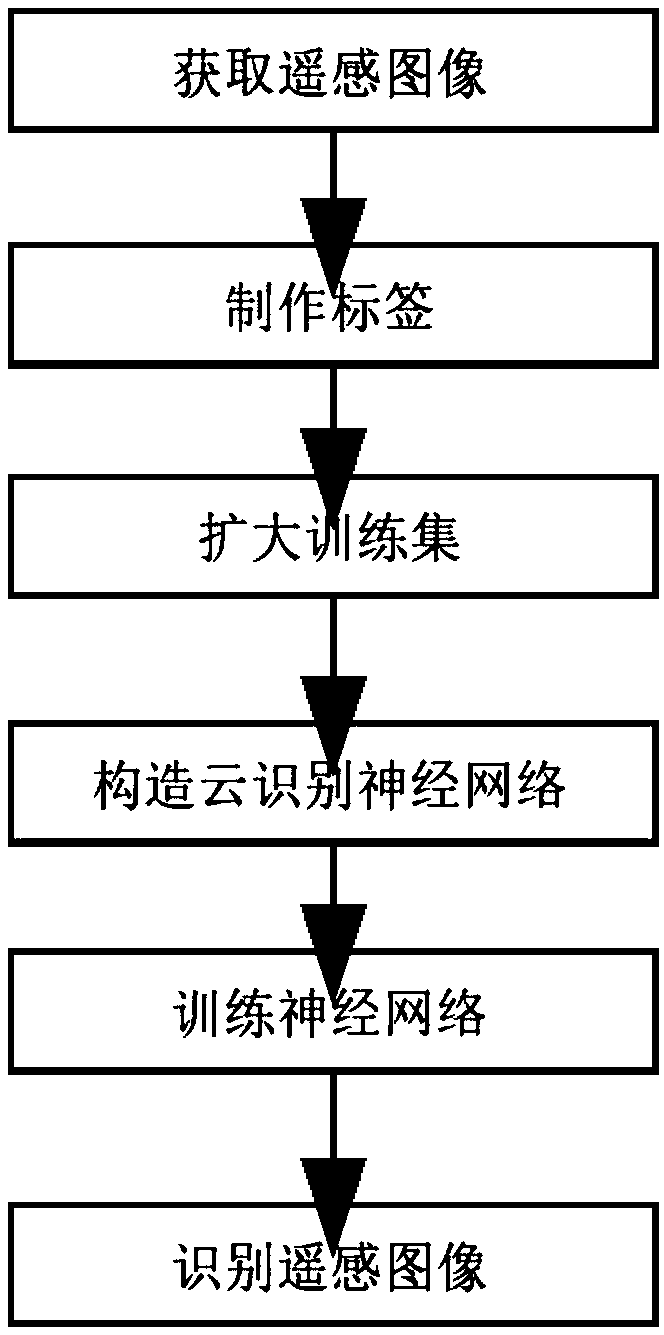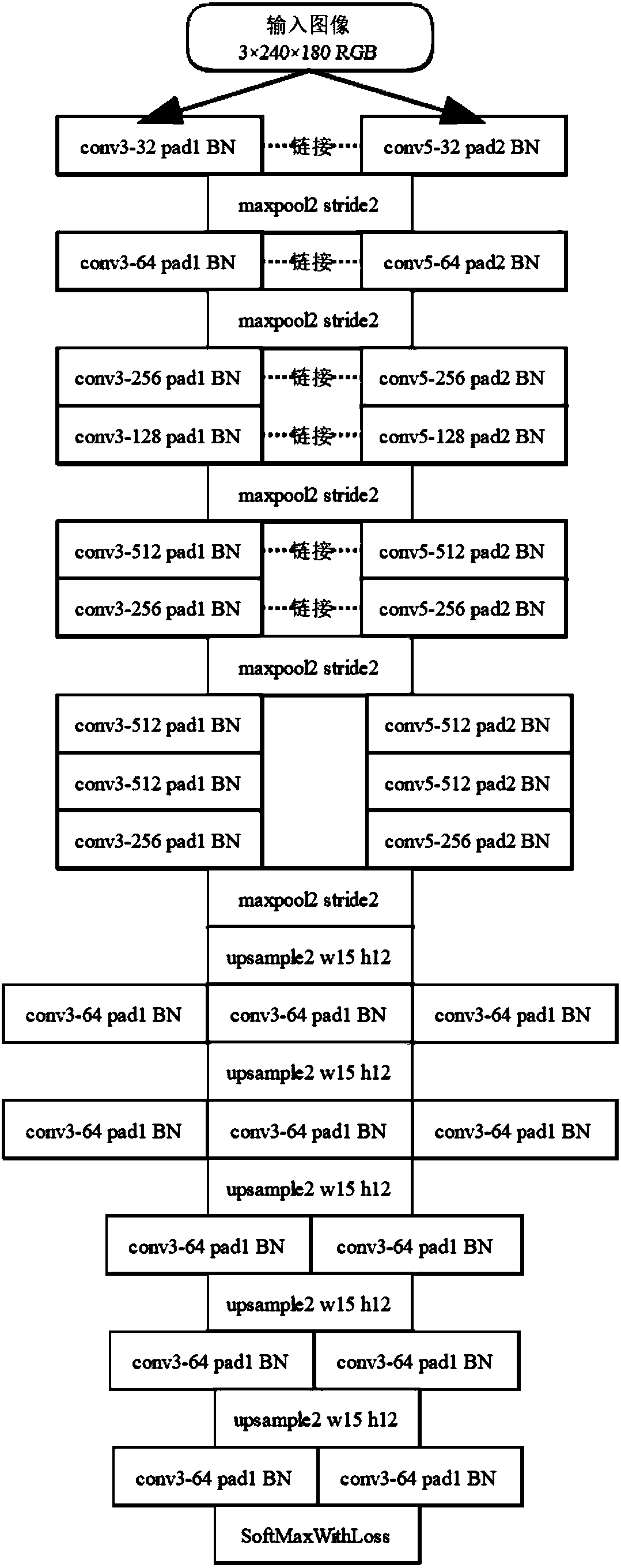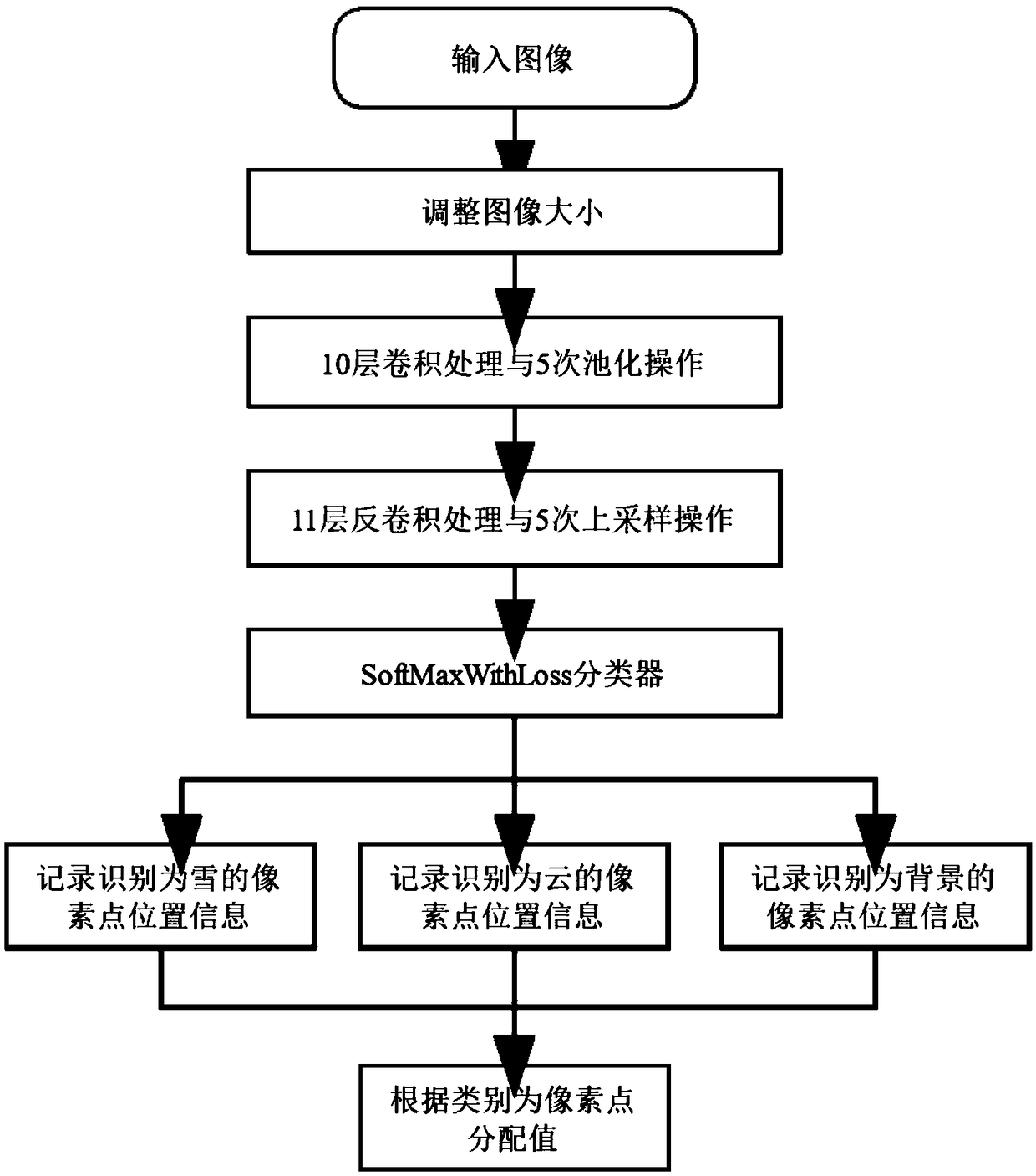A remote sensing image cloud identification n method based on depth learning
A technology of remote sensing image and deep learning, applied in the field of remote sensing image cloud recognition based on deep learning, can solve the problem of low cloud recognition accuracy, improve accuracy and efficiency, and improve the effect of deep convolutional neural network structure
- Summary
- Abstract
- Description
- Claims
- Application Information
AI Technical Summary
Problems solved by technology
Method used
Image
Examples
Embodiment 1
[0020] Example 1 Acquiring and making training data
[0021] The training set needs to be made first, so a large number of remote sensing images are required. Using the crawler technology in Python, the crawler downloads the remote sensing satellite images in the website for label production and verification data sets. In addition, operations such as rotation, cutting, and inversion can be used to expand the training set by multiples, greatly increasing the number of training pictures. After acquiring the pictures, it is necessary to perform pixel-level classification on the pixels of the remote sensing images. Here, the label is made through the Ecognition software. In the process of cloud extraction, the image is first segmented according to the similarity of pixels, and a certain area is selected in the segmented image as a sample of the class, and then the separated areas that may belong to the same class are merged to achieve the purpose of classification .
Embodiment 2
[0022] Example 2 deploying the Caffe-SegNet framework
[0023] Caffe-SegNet is a change on the Caffe framework. Compared with the original SegNet framework, there are many differences. It adds a new input layer, so that the Caffe framework can directly read the picture name in the txt file, and directly use the picture as a batch. Input values are fed into a deep neural network. In addition, an upsampling layer is added, which is not available in the native Caffe package. The upsampling layer can restore the reduced feature values after pooling. After deploying Caffe-SegNet, compile its Python interface——PyCaffe, which makes it possible to use Python to call some operations in the Caffe framework, such as building a neural network, inputting data into the network, and obtaining output data of each layer, etc. Encapsulate some command line operations to facilitate the processing of input and output data and the writing of GUI.
Embodiment 3
[0024] Embodiment 3 design neural network structure
[0025] Inspired by Google's inception v3 model, the newStructure neural network "widens" the SegNet model. In the same convolution, not only one size of convolution kernel is used, but multiple sizes of convolution kernels are used for convolution operations.
[0026] We can design and implement the deep neural network in the Caffe framework. In the remote sensing image cloud recognition deep convolutional neural network, convolution kernels with sizes of 3×3 and 5×5 are used, and it has a 21-layer convolutional structure. , which contains 10 layers of convolutional layers and 11 layers of deconvolutional layers, the structure of the deep convolutional network is as follows figure 2 shown.
PUM
 Login to View More
Login to View More Abstract
Description
Claims
Application Information
 Login to View More
Login to View More - R&D
- Intellectual Property
- Life Sciences
- Materials
- Tech Scout
- Unparalleled Data Quality
- Higher Quality Content
- 60% Fewer Hallucinations
Browse by: Latest US Patents, China's latest patents, Technical Efficacy Thesaurus, Application Domain, Technology Topic, Popular Technical Reports.
© 2025 PatSnap. All rights reserved.Legal|Privacy policy|Modern Slavery Act Transparency Statement|Sitemap|About US| Contact US: help@patsnap.com



